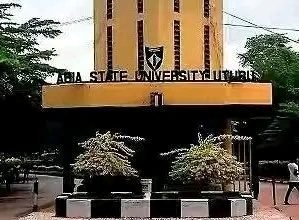Jamb syllabus For Physics
Jamb syllabus for physics 2023/2024 pdf download. Do you want to download latest jamb syllabus for physics 2023/2024 ? If yes keep reading.
Download jamb syllabus for physics is best way to prepare for jamb examination.
If you want to score high jamb mark. You are advised to cover all this topics and practice.
Below are comprehensive list of physics topics on Jamb syllabus pdf read and practice
DOWNLOAD JAMB SYLLABUS FOR PHYSICS
PDF
Click Download button below to download latest jamb syllabus for physics 2023/2024.
Jamb Physics Syllabus 2023/2024 General Objective
The aim of the Unified Tertiary Matriculation Examination (UTME) syllabus in Physics is to
prepare the candidates for the Board’s examination. It is designed to test their achievement of the course objectives, which are to:
(1) sustain their interest in physics;
(2) develop attitude relevant to physics that encourage accuracy, precision, and objectivity;
(3) interpret physical phenomena, laws, definitions, concepts and other theories;
(4) demonstrate the ability to solve correctly physics problems using relevant theories and concepts.
Jamb Syllabus for Physics 2023/2024
Measurement & Unit
(a) Length area and volume: Metre rule,
Venier calipers Micrometer Screw-guage
(b) Mass:
(i) unit of mass
(ii) use of simple beam balance
(c) Time:
(i) unit of time
(ii) time-measuring devices
(d) Fundamental physical quantities
(e) Derived physical quantities and their units
(i) Combinations of fundamental quantities and determination of their units
(f) Dimensions
(i) definition of dimensions
(ii) simple examples.
(g) Limitations of experimental measurements
(i) accuracy of measuring instruments
(ii) simple estimation of errors.
(iii) significant figures.
(iv) standard form.
Scalars and Vectors
(i) definition of scalar and vector quantities
(ii) examples of scalar and vector quantities
(iii) relative velocity
(iv) resolution of vectors into two perpendicular directions including graphical methods of solution.
Motion
(a) Types of motion: translational, oscillatory,
rotational, spin and random
(b) linear motion
(i) speed, velocity and acceleration
(ii) equations of uniformly accelerated motion
(iii) motion under gravity
(iv) distance-time graph and velocity time graph
(v) instantaneous velocity and acceleration.
(c) Projectiles:
(i) calculation of range, maximum height and time of fight
(ii) applications of projectile motion
(d) Newton’s laws of motion:
(i) inertia, mass and force
(ii) relationship between mass and acceleration
(iii) impulse and momentum
(iv) conservation of linear momentum (Coefficient of restitution not necessary)
(e) Motion in a circle:
(i) angular velocity and angular acceleration
(ii) centripetal and centrifugal forces.
(iii) applications
(f) Simple Harmonic Motion (S.H.M):
(i) definition and explanation of simple
harmonic motion
(ii) examples of systems that execute S.H.M
(iii) period frequency and amplitude of S.H.M
(iv) velocity and acceleration of S.H.M
(v) energy change in S.H.M
Gravitational field
(i) Newton’s law of universal gravitation
(ii) gravitational potential
(iii) conservative and non-conservative fields
(iv) acceleration due to gravity [g=GM / R]
(iv) variation of g on the earth’s surface
(v) distinction between mass and weight
(vi) escape velocity
(vii) parking orbit and weightlessness
Equilibrium of Forces
(a) equilibrium of a particles:
(i) equilibrium of coplanar forces
(ii) triangles and polygon of forces
(iii) Lami’s theorem
(b) principles of moments
(i) moment of a force
(ii) simple treatment and moment of a couple (torgue)
(iii) applications
(c) conditions for equilibrium of rigid bodies under the action of parallel and non-parallel forces:
(i) resolution and composition of forces in two perpendicular directions,
(ii) resultant and equilibrant
(d) centre of gravity and stability
(i) stable, unstable and neutral equilibra
Work Energy and Power
(i) definition of work, energy and power
(ii) forms of energy
(iii) conservation of energy
(iv) qualitative treatment between different forms of energy
(v) interpretation of area under the force distance curve
Friction
(i) static and dynamic friction
(ii) coefficient of limiting friction and its determination.
(iii) advantages and disadvantages of friction
(iv) reduction of friction
(v) qualitative treatment of viscosity and terminal viscosity.
(vi) stoke’s law.
Simple Machines
(i) definition of machine
(ii) types of machines
(iii) mechanical advantage, velocity ratio and efficiency of machines
Elasticity
(i) elastic limit, yield point, breaking point, Hooke’s law and Young’s modulus
(ii) the spring balance as a device for measuring force
(iii) work done in springs and elastic strings
Pressure
(a) Atmospheric Pressure:
(i) definition of atmospheric pressure
(ii) units of pressure (S.I) units
(iii) measurement of pressure
(iv) simple mercury barometer, aneroid barometer and manometer.
(v) variation of pressure with height
(vi) the use of barometer as an altimeter.
(b) Pressure in liquids:
(i) the relationship between pressure, depth and density (P = ρgh)
(ii) transmission of pressure in liquids (Pascal’s Principle)
(iii) application
Liquids at Rest
(i) determination of density of solid and liquids
(ii) definition of relative density
(iii) upthrust on a body immersed in a liquid
(iv) Archimede’s principle and law of flotation and applications, e.g. ships and hydrometers.
Temperature and Its Measurement
(i) concept of temperature
(ii) thermometric properties
(iii) calibration of thermometers
(iv) temperature scales –Celsius and Kelvin.
(v) types of thermometers
(vi) conversion from one scale of temperature to another
Thermal Expansion
(a) Solids:
(i) definition and determination of linear, volume and area expansivities
(ii) effects and applications, e.g. expansion in building strips and railway lines
(iii) relationship between different expansivities
(b) Liquids:
(i) volume expansivity
(ii) real and apparent expansivities
(iii) determination of volume expansivity
(iv) anomalous expansion of water
Gas Laws
(i) Boyle’s law (PV = constant)
(ii) Charle’s law ( V/P = constant)
(iii) Pressure law ( P/T = constant )
(iv) absolute zero of temperature
(v) general gas quation ( PV/T = constant )
(vi) ideal gas equation (Pv = nRT)
Quantity of Heat
(i) heat as a form of energy
(ii) definition of heat capacity and specific heat capacity of solids and liquids
(iii) determination of heat capacity and specific heat capacity of substances by simple methods e.g method of mixtures and electrical method
Change of State
(i) latent heat
(ii) specific latent heats of fusion and vaporization;
(iii) melting, evaporation and boiling
(iv) the influence of pressure and of dissolved substances on boiling and melting points.
(v) application in appliances
Vapours
(i) unsaturated and saturated vapours
(ii) relationship between saturated vapour pressure (S.V.P) and boiling
(iii) determination of S.V.P by barometer tube method
(iv) formation of dew, mist, fog, and rain
(v) study of dew point, humidity and relative humidity
(vi) hygrometry; estimation of the humidity of the atmosphere using wet and dry bulb hygrometers.
Structure of Matter and Kinetic Theory
(a) Molecular nature of matter
(i) atoms and molecules
(ii) molecular theory: explanation of Brownian motion, diffusion, surface tension, capillarity, adhesion, cohesion and angles of contact
(iii) examples and applications.
(b) Kinetic Theory
(i) assumptions of the kinetic theory
(ii) using the theory to explain the pressure exerted by gas, Boyle’s law, Charles’ law, melting, boiling, vapourization, change in temperature evaporation, etc.
Heat Transfer
(i) conduction, convention and radiation as modes of heat transfer
(ii) temperature gradient, thermal conductivity and heat flux
(iii) effect of the nature of the surface on the energy radiated and absorbed by it.
(iv) the conductivities of common materials.
(v) the thermos flask
(vii) land and sea breeze
Waves
(a) Production and Propagation:
(i) wave motion,
(ii) vibrating systems as source of waves
(iii) waves as mode of energy transfer
(iv) distinction between particle motion and wave motion
(v) relationship between frequency, wavelength and wave velocity (V=f λ)
(vi) phase difference
(vii) progressive wave equation e.g y = A sin 2π/λ (vt + x)
(b) Classification:
(i) types of waves; mechanical and electromagnetic waves
(ii) longitudinal and transverse waves
(iii) stationary and progressive waves
(iv) examples of waves from springs, ropes, stretched strings and the ripple tank.
(c) Characteristics / Properties:
(i) reflection, refraction, diffraction and plane Polarization
(ii) superposition of waves e.g interference
Propagation of Sound Waves
(i) the necessity for a material medium
(ii) speed of sound in solids, liquids and air;
(iii) reflection of sound; echoes, reverberation and their applications
(iv) disadvantages of echoes and reverberations
Characteristics of Sound Waves
(i) noise and musical notes
(ii) quality, pitch, intensity and loudness and their application to musical instruments;
(iii) simple treatment of overtones produced by vibrating strings and their columns Fo= 1/2L Square root T/M
(iv) acoustic examples of resonance
(v) frequency of a note emitted by air columns in closed and open pipes in relation to their lengths.
Light Energy
(a) Source of Light:
(i) natural and artificial source of light
(ii) luminous and non-luminous objects
(b) Propagation of light:
(i) speed, frequency and wavelength of light
(ii) formation of shadows and eclipse
(iii) the pin-hole camera.
Reflection of Light at Plane and Curved Surfaces
(i) laws of reflection.
(ii) application of reflection of light
(iii) formation of images by plane, concave and convex mirrors and ray diagrams
(iv) use of the mirror formula l/F = I/U + I/V
(v) linear magnification
Refraction of Light Through
(a) Plane and Curved Surface:
(i) explanation of refraction in terms of velocity of light in the media.
(ii) laws of refraction
(iii) definition of refractive index of a medium
(iv) determination of refractive index of glass and liquid using Snell’s law
(v) real and apparent depth and lateral displacement
(vi) critical angle and total internal reflection
(b) Glass Prism:
(i) use of the minimum deviation formula u=sin A+D/2 / A/2.
(ii) type of lenses
(iii) use of lens formula l = l + l f u v
(iv) magnification
Optical Instruments
(i) the principles of microscopes, telescopes, projectors, cameras and the human eye (physiological details of the eye are not required)
(ii) power of a lens
(iii) angular magnification
(iv) near and far points
(v) sight defects and their corrections
(a) dispersion of light and colours
(i) dispersion of white light by a triangular prism
(ii) production of pure spectrum
(iii) colour mixing by addition and subtraction
(iv) colour of objects and colour filters
(b) electgro magnetic spectrum
(i) description of sources and uses of various types of radiation.
Electrostatics
(i) existence of positive and negative charges in matter
(ii) charging a body by friction, contact and induction
(iii) electroscope
(iv) coulomb’s inverse square law electric field and potential
(v) electric field and potential
(vi) electric discharge and lightning
Capacitors
(i) functions of capacitors
(ii) parallel plate capacitors
(iii) capacitance of a capacitors
(iv) the relationship between capacitance, area
separation of plates and medium between the
plates. C = 3A/d
(v) capacitors in series and parallel
(vi) energy stored in a capacitor
Electric Cells
(i) simple voltaic cell and its defects;
(ii) Daniel cell, Leclanche cell (wet and dry)
(iii) lead –acid accumulator and Nickel-Iron
(Nife) Lithium lon and Mercury cadmium
(iv) maintenance of cells and batteries (detail treatment of the chemistry of a cell is not required
(v) arrangement of cells
Current Electricity
(i) electromagnetic force (emf), potential difference (p.d.), current, internal resistance of a cell and lost Volt
(ii) Ohm’s law
(iii) measurement of resistance
(iv) meter bridge
(v) resistance in series and in parallel and their combination
(vi) the potentiometer method of measuring emf, current and internal resistance of a cell.
Electrical Energy and Power
(i) concepts of electrical energy and power
(ii) commercial unit of electric energy and power
(iii) electric power transmission
(iv) heating effects of electric current.
Magnets and Magnetic Fields
(i) natural and artificial magnets
(ii) magnetic properties of soft iron and steel
(iii) methods of making magnets and demagnetization
(iv) concept of magnetic field
(v) magnetic field of a permanent magnet
(vi) magnetic field round a straight current carrying conductor, circular wire and solenoid
(vii) properties of the earth’s magnetic field; north and south poles, magnetic meridian and angle of dip and declination
(viii) flux and flux density
(ix) variation of magnetic field intensity over the earth’s surface
(x) applications: earth’s magnetic field in navigation and mineral exploration.
Force on a Current-Carrying Conductor in
a) Magnetic Field:
(i) quantitative treatment of force between two
parallel current-carrying conductors
(ii) force on a charge moving in a magnetic
field;
(iii) the d. c. motor
(iv) electromagnets
(v) carbon microphone
(vi) moving coil and moving iron instruments
(vii) conversion of galvanometers to ammeters
and voltmeter using shunts and multipliers
(a) Electromagnetic Induction
(i) Faraday’s laws of electromagnetic induction
(ii) factors affecting induced emf
(iii) Lenz’s law as an illustration of the principle of conservation of energy
(iv) a.c. and d.c generators
(v) transformers
(vi) the induction coil
(b) Inductance:
(i) explanation of inductance
(ii) unit of inductance
(iii) energy stored in an inductor
(iv) application/uses of inductors
(c) Eddy Current:
(i) reduction of eddy current
(ii) applications of eddy current
Simple A. C. Circuits
(i) explanation of a.c. current and voltage
(ii) peak and r.m.s. values
(iii) a.c. source connected to a resistor;
(iv) a.c source connected to a capacitor capacitive reactance
(v) a.c source connected to an inductorinductive reactance
(vi) series R-L-C circuits
(vii) vector diagram
(viii) reactance and impedance of alternative quantities
(ix) effective voltage in an R-L-C circuits
(x) resonance and resonance frequency
Conduction of Electricity Through
(a) liquids:
(i) electrolytes and non-electrolyte
(ii) concept of electrolysis
(iii) Faraday’s law of electrolysis
(iv) application of electrolysis, e.g electroplating, calibration of ammeter etc.
(b) gases:
(i) discharge through gases (quantitative treatment only)
(ii) application of conduction of electricity through gases
Elementary Modern Physics
(i) models of the atom and their limitations
(ii) elementary structure of the atom;
(iii) energy levels and spectra
(iv) thermionic and photoelectric emissions;
(v) Einstein’s equation and stopping potential
(vi) applications of thermionic emissions and photoelectric effects
(vii) simple method of production of x-rays
(viii) properties and applications of alpha, beta and gamma rays
(xiii) half-life and decay constant
(xiv) simple ideas of production of energy by
fusion and fission
(xv) binding energy, mass defect and Einsterin’s Energy equation
(xvi) wave-particle paradox (duality of matter)
(xvii) electron diffraction
(xviii) the uncertainty principle
Introductory Electronics
(i) distinction between metals, semiconductors
and insulators (elementary knowledge of band
gap is required)
(ii) intrinsic and extrinsic semi-conductors;
(iii) uses of semiconductors and diodes in
rectification and transistors in amplification
(iv) n-type and p-type semi-conductors
(v) elementary knowledge of diodes and transistors
(vi) use of semiconductors and diodes in
rectification and transistors in amplification.









